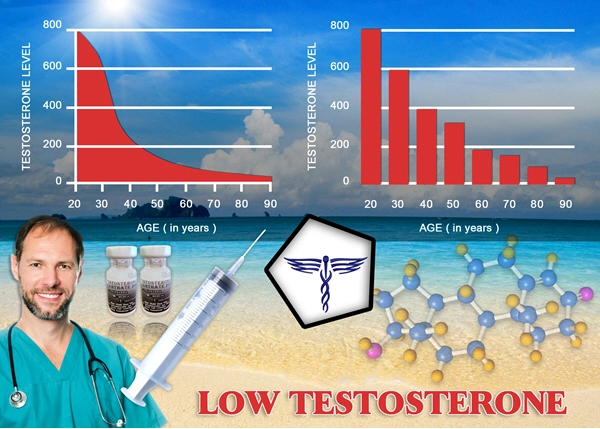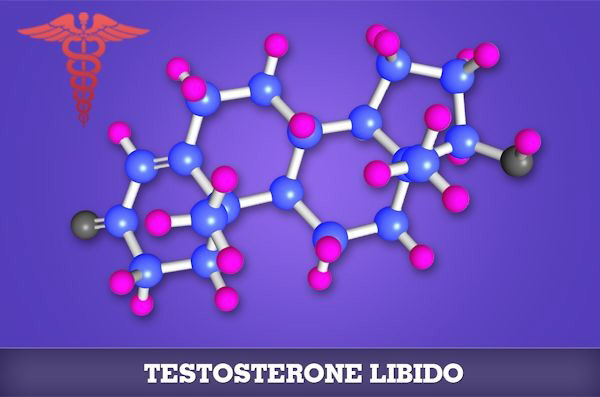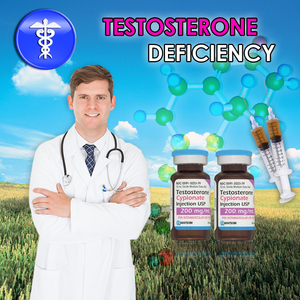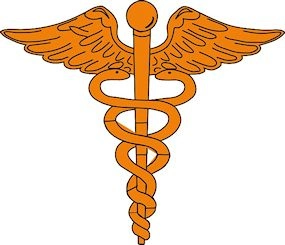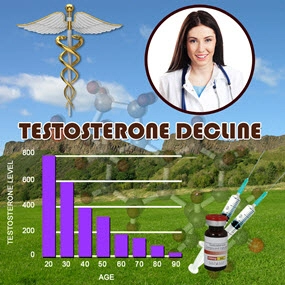Introduction
Testosterone replacement therapy (TRT) has become a cornerstone in the management of hypogonadism among American males, with the Androderm testosterone transdermal patch being a popular choice due to its non-invasive nature and ease of use. Over the past decade, extensive data has been gathered on its safety profile, allowing for a comprehensive review of its long-term effects. This article aims to provide an in-depth analysis of the incidence of adverse effects associated with the Androderm patch, offering valuable insights for both healthcare providers and patients.
Overview of Androderm
Androderm is a transdermal patch designed to deliver testosterone continuously over a 24-hour period. It is applied nightly to the skin of the back, abdomen, upper arms, or thighs. The patch's mechanism of action involves the diffusion of testosterone through the skin into the bloodstream, mimicking the body's natural circadian rhythm of testosterone release.
Incidence of Adverse Effects
Over the past decade, numerous studies and clinical trials have been conducted to monitor the safety of Androderm. The most commonly reported adverse effects include skin irritation at the application site, which occurs in approximately 30-40% of users. This irritation typically manifests as erythema, pruritus, or mild dermatitis, and is generally manageable with topical corticosteroids or by rotating the application site.
Cardiovascular Safety
Concerns about the cardiovascular safety of TRT have been a focal point of research. A comprehensive review of data from the past decade indicates that the use of Androderm does not significantly increase the risk of cardiovascular events such as myocardial infarction or stroke in men without pre-existing cardiovascular disease. However, it is crucial for patients with known cardiovascular risk factors to be monitored closely, as individual responses may vary.
Prostate Health
Another area of concern is the potential impact of TRT on prostate health. Studies have shown that Androderm does not significantly increase the risk of prostate cancer or benign prostatic hyperplasia (BPH) in men with normal baseline prostate-specific antigen (PSA) levels. However, regular monitoring of PSA levels is recommended for all men on TRT to ensure early detection of any changes in prostate health.
Hematological Effects
Elevated hematocrit levels, indicative of increased red blood cell mass, have been observed in some users of Androderm. While this is generally not a cause for concern, it is important for patients to have their hematocrit levels monitored periodically, as excessively high levels can increase the risk of thrombotic events.
Psychological and Behavioral Effects
Some anecdotal reports have suggested potential psychological and behavioral effects associated with Androderm use, such as mood swings or increased aggression. However, large-scale studies have not found a significant correlation between Androderm use and these effects. It is essential for patients to discuss any changes in mood or behavior with their healthcare provider to rule out other underlying causes.
Long-Term Safety and Efficacy
Long-term studies have demonstrated that Androderm maintains its efficacy in normalizing testosterone levels over extended periods. This is crucial for patients requiring long-term TRT, as it ensures consistent management of hypogonadism symptoms. The safety profile remains stable over time, with no new adverse effects emerging in long-term users.
Conclusion
The Androderm testosterone transdermal patch has been a safe and effective option for testosterone replacement therapy in American males over the past decade. While certain adverse effects such as skin irritation are common, they are generally manageable. The patch does not appear to significantly increase the risk of cardiovascular events or prostate issues in men without pre-existing conditions. Regular monitoring of hematocrit levels and prostate health is recommended to ensure continued safety. Overall, Androderm remains a reliable choice for men seeking to manage hypogonadism, with a well-documented safety profile that supports its use in clinical practice.
Contact Us Today For A Free Consultation

- Androderm: Balancing Cardiovascular Benefits and Risks in Testosterone Therapy for Men [Last Updated On: March 18th, 2025] [Originally Added On: March 18th, 2025]
- Androderm: Enhancing Muscle Mass in American Men Through Testosterone Therapy [Last Updated On: March 18th, 2025] [Originally Added On: March 18th, 2025]
- Androderm Therapy: Transforming Lives of American Men with Low Testosterone [Last Updated On: March 19th, 2025] [Originally Added On: March 19th, 2025]
- Androderm: Enhancing Libido in American Males with Low Testosterone [Last Updated On: March 19th, 2025] [Originally Added On: March 19th, 2025]
- Androderm: Convenient, Effective Testosterone Patch Preferred by American Men [Last Updated On: March 19th, 2025] [Originally Added On: March 19th, 2025]
- Androderm: Managing Side Effects for Effective Testosterone Therapy in American Men [Last Updated On: March 20th, 2025] [Originally Added On: March 20th, 2025]
- Androderm: Effective Testosterone Patch for Men with Hypogonadism [Last Updated On: March 20th, 2025] [Originally Added On: March 20th, 2025]
- Androderm: Enhancing Energy and Vitality in Men with Low Testosterone [Last Updated On: March 21st, 2025] [Originally Added On: March 21st, 2025]
- Androderm: Revolutionizing Testosterone Replacement for American Males with Hypogonadism [Last Updated On: March 21st, 2025] [Originally Added On: March 21st, 2025]
- Androderm: Testosterone Patch Effects on Prostate Health in American Males [Last Updated On: March 21st, 2025] [Originally Added On: March 21st, 2025]
- Androderm: Enhancing Mood in American Males with Low Testosterone [Last Updated On: March 21st, 2025] [Originally Added On: March 21st, 2025]
- Androderm: Enhancing Life Quality in Aging American Men with Low Testosterone [Last Updated On: March 22nd, 2025] [Originally Added On: March 22nd, 2025]
- Androderm Patch: Effective Low Testosterone Treatment for American Men [Last Updated On: March 22nd, 2025] [Originally Added On: March 22nd, 2025]
- Androderm: Revolutionizing Testosterone Therapy for American Men [Last Updated On: March 22nd, 2025] [Originally Added On: March 22nd, 2025]
- Androderm: Combating Fatigue in American Males with Low Testosterone [Last Updated On: March 22nd, 2025] [Originally Added On: March 22nd, 2025]
- Androderm: Effective Testosterone Replacement via Transdermal Patch for American Men [Last Updated On: March 23rd, 2025] [Originally Added On: March 23rd, 2025]
- Androderm: Revolutionizing Hypogonadism Treatment for American Men [Last Updated On: March 23rd, 2025] [Originally Added On: March 23rd, 2025]
- Androderm: Revolutionizing Testosterone Therapy for American Men's Health [Last Updated On: March 23rd, 2025] [Originally Added On: March 23rd, 2025]
- Androderm: Enhancing Physical Performance in American Males with Low Testosterone [Last Updated On: March 24th, 2025] [Originally Added On: March 24th, 2025]
- Androderm: Effective Transdermal Testosterone Therapy for American Men's Health [Last Updated On: March 24th, 2025] [Originally Added On: March 24th, 2025]
- Androderm: Enhancing American Men's Lives Through Testosterone Replacement Therapy [Last Updated On: March 24th, 2025] [Originally Added On: March 24th, 2025]
- Androderm: Restoring Testosterone Levels in American Men Effectively [Last Updated On: March 24th, 2025] [Originally Added On: March 24th, 2025]
- Androderm: Revolutionizing Testosterone Therapy for American Men with Hypogonadism [Last Updated On: March 24th, 2025] [Originally Added On: March 24th, 2025]
- Androderm: Revolutionizing Testosterone Therapy for American Men with Hypogonadism [Last Updated On: March 24th, 2025] [Originally Added On: March 24th, 2025]
- Androderm: Enhancing Sleep Quality in American Males with Low Testosterone [Last Updated On: March 24th, 2025] [Originally Added On: March 24th, 2025]
- Androderm: Treating Hypogonadism with Testosterone Patch - Benefits and Risks [Last Updated On: March 25th, 2025] [Originally Added On: March 25th, 2025]
- Androderm: Revolutionizing Testosterone Therapy for American Males [Last Updated On: March 25th, 2025] [Originally Added On: March 25th, 2025]
- Androderm: Enhancing Heart Health in Men with Testosterone Therapy [Last Updated On: March 25th, 2025] [Originally Added On: March 25th, 2025]
- Androderm Therapy: Importance of Monitoring for American Men's Health [Last Updated On: March 25th, 2025] [Originally Added On: March 25th, 2025]
- Androderm: Revolutionizing Testosterone Therapy for American Men's Health [Last Updated On: March 25th, 2025] [Originally Added On: March 25th, 2025]
- Androderm: Revolutionizing Testosterone Therapy for American Males with Hypogonadism [Last Updated On: March 25th, 2025] [Originally Added On: March 25th, 2025]
- Androderm: Enhancing Male Wellness with Transdermal Testosterone Delivery [Last Updated On: March 26th, 2025] [Originally Added On: March 26th, 2025]
- Androderm: Revolutionizing Testosterone Therapy for American Men with Hypogonadism [Last Updated On: March 26th, 2025] [Originally Added On: March 26th, 2025]
- Androderm: Revolutionizing Testosterone Therapy for American Men with Low T [Last Updated On: March 26th, 2025] [Originally Added On: March 26th, 2025]
- Androderm: Revolutionizing Testosterone Therapy for American Men's Health [Last Updated On: March 26th, 2025] [Originally Added On: March 26th, 2025]
- Androderm: Revolutionizing Men's Health with Testosterone Patch Therapy [Last Updated On: March 26th, 2025] [Originally Added On: March 26th, 2025]
- Androderm: Enhancing Male Longevity Through Testosterone Replacement Therapy [Last Updated On: March 26th, 2025] [Originally Added On: March 26th, 2025]
- Androderm: Enhancing Emotional Well-being in American Men with Hypogonadism [Last Updated On: March 26th, 2025] [Originally Added On: March 26th, 2025]
- Androderm: Revolutionizing Testosterone Therapy for American Men with Low T [Last Updated On: March 26th, 2025] [Originally Added On: March 26th, 2025]
- Androderm: Effective Transdermal Testosterone Patch for American Men's Health [Last Updated On: March 27th, 2025] [Originally Added On: March 27th, 2025]
- Androderm: Enhancing Skin Health and Vitality in American Men [Last Updated On: March 27th, 2025] [Originally Added On: March 27th, 2025]
- Androderm: Enhancing Male Vitality with Transdermal Testosterone Patch [Last Updated On: March 27th, 2025] [Originally Added On: March 27th, 2025]
- Androderm: Revolutionizing Testosterone Therapy for American Men with Hypogonadism [Last Updated On: March 27th, 2025] [Originally Added On: March 27th, 2025]
- Androderm: Impact on Male Fertility and Management for American Men [Last Updated On: March 28th, 2025] [Originally Added On: March 28th, 2025]
- Androderm: Effective Testosterone Patch for Hypogonadism in American Males [Last Updated On: March 28th, 2025] [Originally Added On: March 28th, 2025]
- Androderm: Managing Low Testosterone in American Men with Transdermal Patch Therapy [Last Updated On: March 28th, 2025] [Originally Added On: March 28th, 2025]
- Androderm: Enhancing Cognitive Function in American Men with Low Testosterone [Last Updated On: March 29th, 2025] [Originally Added On: March 29th, 2025]
- Androderm: Revolutionizing Testosterone Therapy for American Men's Health [Last Updated On: March 29th, 2025] [Originally Added On: March 29th, 2025]
- Androderm: Effective Transdermal Testosterone Therapy for American Men with Hypogonadism [Last Updated On: March 29th, 2025] [Originally Added On: March 29th, 2025]
- Androderm: Enhancing American Males' Health with Testosterone Patch Therapy [Last Updated On: March 30th, 2025] [Originally Added On: March 30th, 2025]
- Androderm: Revolutionizing Testosterone Deficiency Treatment for American Men [Last Updated On: March 30th, 2025] [Originally Added On: March 30th, 2025]
- Androderm: Revolutionizing Testosterone Therapy for American Men's Health [Last Updated On: March 31st, 2025] [Originally Added On: March 31st, 2025]
- Androderm: Boosting Energy in American Men with Low Testosterone [Last Updated On: April 1st, 2025] [Originally Added On: April 1st, 2025]
- Androderm: Enhancing Sexual Health and Well-being in American Men with Low Testosterone [Last Updated On: April 1st, 2025] [Originally Added On: April 1st, 2025]
- Androderm: A Comprehensive Guide to Testosterone Replacement for American Males [Last Updated On: April 4th, 2025] [Originally Added On: April 4th, 2025]
- Androderm: Enhancing Vitality and Longevity in American Men with Low Testosterone [Last Updated On: April 6th, 2025] [Originally Added On: April 6th, 2025]
- Androderm: Effective Testosterone Patch for Hypogonadism in American Men [Last Updated On: April 6th, 2025] [Originally Added On: April 6th, 2025]
- Androderm: Effective Testosterone Replacement for American Males with Hypogonadism [Last Updated On: April 8th, 2025] [Originally Added On: April 8th, 2025]
- Androderm: Enhancing Vitality in American Males with Testosterone Deficiency [Last Updated On: April 9th, 2025] [Originally Added On: April 9th, 2025]
- Androderm: Revolutionizing Testosterone Replacement Therapy for American Men [Last Updated On: April 9th, 2025] [Originally Added On: April 9th, 2025]
- Androderm: Effective Transdermal Solution for Low Testosterone in American Men [Last Updated On: April 9th, 2025] [Originally Added On: April 9th, 2025]
- Androderm: Enhancing Male Performance with Testosterone Patch Therapy [Last Updated On: April 10th, 2025] [Originally Added On: April 10th, 2025]
- Androderm: Revolutionizing Testosterone Therapy for American Men's Health and Vitality [Last Updated On: April 11th, 2025] [Originally Added On: April 11th, 2025]
- Androderm: Enhancing Cognitive and Emotional Health in American Men with Hypogonadism [Last Updated On: April 12th, 2025] [Originally Added On: April 12th, 2025]
- Androderm: Revolutionizing Testosterone Replacement Therapy for Men's Health [Last Updated On: April 12th, 2025] [Originally Added On: April 12th, 2025]
- Androderm: Revolutionizing Testosterone Deficiency Treatment in American Men [Last Updated On: April 12th, 2025] [Originally Added On: April 12th, 2025]
- Androderm: Enhancing American Men's Vitality Through Testosterone Replacement Therapy [Last Updated On: April 15th, 2025] [Originally Added On: April 15th, 2025]
- Androderm: A Comprehensive Guide to Testosterone Patch Therapy for American Men [Last Updated On: April 15th, 2025] [Originally Added On: April 15th, 2025]
- Androderm: Revolutionizing Testosterone Therapy for American Men's Health and Well-being [Last Updated On: April 15th, 2025] [Originally Added On: April 15th, 2025]
- Androderm: Revolutionizing Testosterone Deficiency Treatment in American Men [Last Updated On: April 15th, 2025] [Originally Added On: April 15th, 2025]
- Androderm: Revolutionizing Testosterone Therapy for American Men's Health [Last Updated On: April 16th, 2025] [Originally Added On: April 16th, 2025]
- Androderm: Boosting Energy, Performance, and Life Quality in American Men with Low Testosterone [Last Updated On: April 17th, 2025] [Originally Added On: April 17th, 2025]
- Androderm: Enhancing Heart and Sexual Health in American Men with Testosterone Therapy [Last Updated On: April 17th, 2025] [Originally Added On: April 17th, 2025]
- Androderm: Revolutionizing Testosterone Deficiency Treatment for American Males [Last Updated On: April 17th, 2025] [Originally Added On: April 17th, 2025]
- Androderm: Revolutionizing Testosterone Therapy for American Men's Health [Last Updated On: April 17th, 2025] [Originally Added On: April 17th, 2025]
- Androderm: Enhancing Sexual, Cardiovascular, and Skin Health in American Men [Last Updated On: April 18th, 2025] [Originally Added On: April 18th, 2025]
- Androderm: Enhancing Male Health with Testosterone Patch Therapy [Last Updated On: April 19th, 2025] [Originally Added On: April 19th, 2025]
- Androderm: Revolutionizing Testosterone Therapy for American Men's Health [Last Updated On: April 21st, 2025] [Originally Added On: April 21st, 2025]
- Androderm Patch Enhances Life Quality in American Males with Andropause: Survey Results [Last Updated On: April 23rd, 2025] [Originally Added On: April 23rd, 2025]
- Androderm: Effective Testosterone Patch for American Men's Hypogonadism Treatment [Last Updated On: April 23rd, 2025] [Originally Added On: April 23rd, 2025]
Word Count: 610

